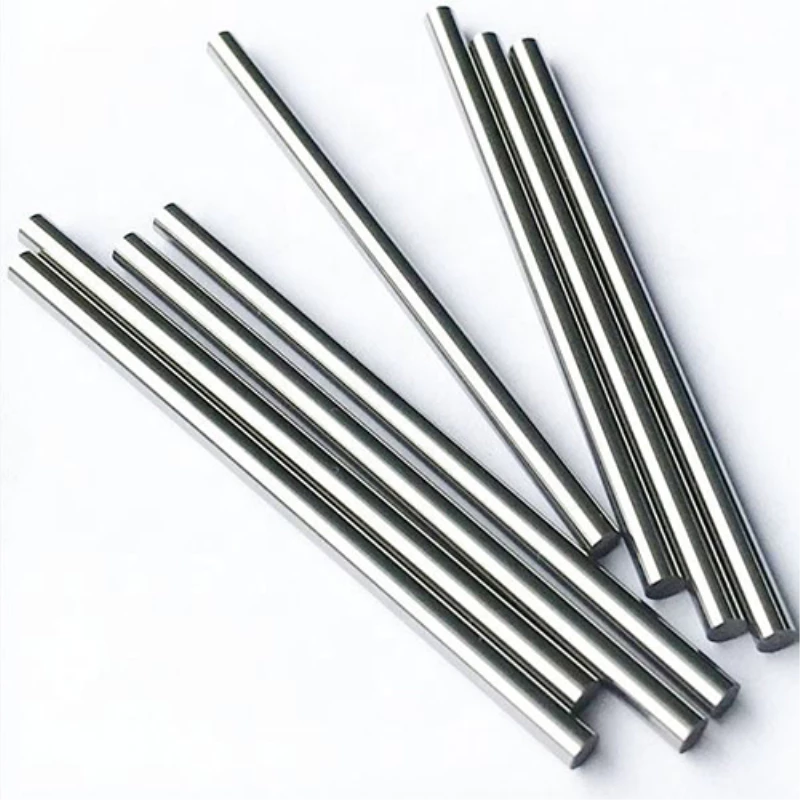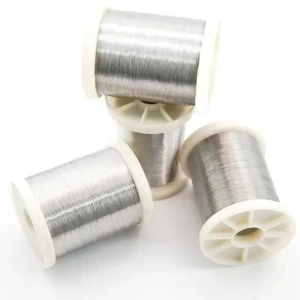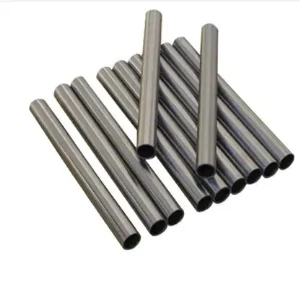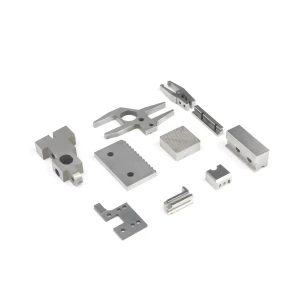Niobium and Hafnium alloy C103 rod -bar
Niobium-hafnium alloys are usually prepared by a method that combines electron beam melting and vacuum waste arc melting. The ingots are then extruded or forged at a temperature above 1200°C and rolled at a temperature below 500°C. And drawing and other processing can be made into products such as plates, strips, rods, wires and forgings.
Niobium-Hafnium Alloy Welding
Niobium-hafnium alloy has good weldability. Tungsten argon gas shielded welding and electron beam fusion welding are usually used to connect the parent metal. These two welding methods can also be used to complete the welding of niobium-hafnium alloy with titanium and titanium alloys.
The quality of the weld is related to the purity of the argon gas and the degree of vacuum. Generally, the higher the purity of the argon gas and the lower the residual atmospheric pressure, the better the quality of the weld.
Niobium-Hafnium Alloy Heat Treatment
Generally, annealing treatment and solid solution aging treatment under vacuum or inert gas protection are used.
Niobium-Hafnium Alloy Coating
Cr-Ti-Si and Cr-Fe-Si anti-oxidation coatings are usually used.
The niobium-hafnium alloy coated with these two coatings has an anti-oxidation life of more than 150 hours in air at 1371°C.
Niobium-Hafnium alloy uses
Mainly used in liquid rocket engine radiation cooling nozzle extension and thrust chamber body, space power generation system molten sodium and sodium-potassium alloy pressure tubes and turbine pumps, jet engine high-temperature structural components, etc.
| R04295 Niob-Hafnium alloy | ||||
| element | Content ,Max,Weight % (Unless otherwise specified) | |||
| C | 0.015 | |||
| O | 0.025 | |||
| N | 0.01 | |||
| H | 0.0015 | |||
| Hf | 9~11 | |||
| Ti | 0.7~1.3 | |||
| Zr | 0.7 | |||
| W | 0.5 | |||
| Ta | 0.5 | |||
| Nb(Take the difference) | ||||
In the era of rapid development of modern science and technology, the research and development of new materials has become one of the key factors in promoting scientific and technological progress. Among them, niobium-hafnium alloy, as a super material with unique properties, has attracted widespread attention from scientists. This article will give you an in-depth understanding of the properties, applications and future development prospects of niobium-hafnium alloys.
First, let’s first understand what niobium-hafnium alloy is. Niobium-hafnium alloy is an alloy composed of two metal elements: niobium (Nb) and hafnium (Hf). The two elements belong to the same group in the periodic table and have similar chemical properties. Through reasonable mixing ratios, scientists can prepare niobium-hafnium alloys with excellent properties.
The performance of niobium-hafnium alloy is mainly reflected in the following aspects:
1. High-temperature corrosion resistance: Niobium-hafnium alloy has good anti-oxidation and anti-corrosion properties in high-temperature environments, which makes it have broad application prospects in aerospace, nuclear industry and other fields.
2. High strength and toughness: Niobium-Hafnium alloy has high strength and toughness, and can still maintain stable performance under severe working conditions such as high pressure and high impact.
3. Good electrical conductivity: Due to the electronic structure characteristics of niobium and hafnium, niobium-hafnium alloy has good electrical conductivity and can be used to manufacture high-performance conductive devices.
4. Excellent magnetic properties: Niobium-hafnium alloy exhibits excellent superconducting properties under specific temperature and magnetic field conditions, and can be used in fields such as magnetic levitation and magnetic resonance imaging.
Based on the above characteristics, niobium-hafnium alloy has shown a wide range of uses in many fields. For example:
1. Aerospace field: Niobium-hafnium alloy can be used to manufacture key components such as spacecraft thermal protection systems and engine components due to its high temperature corrosion resistance and high strength.
2. Nuclear industry: Niobium-hafnium alloy can be used as fuel cladding material for nuclear reactors to improve the safety performance of the reactor.
3. Electric power industry: The good electrical conductivity of niobium-hafnium alloy can be used to manufacture high-efficiency transmission lines, transformers and other power equipment.
4. Medical field: The application of niobium-hafnium alloy in magnetic resonance imaging equipment can improve image quality and reduce equipment costs.
Niobium-hafnium alloy is an alloy composed of the base material niobium, the alloying element hafnium and other alloying elements. They have high ductility, good welding, coating and forming properties, and are low-strength, high-ductility alloys.
Niobium-hafnium alloy material has excellent room temperature and high temperature mechanical properties, high melting point, low density, high temperature and high strength, and good machinability. It is widely used in aerospace engines, weapon propellers, rocket missile liquid two-component engines, as well as nuclear reactors, diving Gas turbines, automobile engines, diesel engines, high-temperature furnace heating belts, high-temperature molds, high-temperature fixtures, and high-temperature crucibles.
However, despite the many advantages of niobium-hafnium alloys, there are still certain challenges in their preparation. Currently, scientists are studying more efficient preparation methods and optimizing alloy compositions to further improve the performance of niobium-hafnium alloys and reduce costs.
Looking to the future, with the continuous advancement of science and technology, the research on niobium-hafnium alloys will make more breakthroughs and bring more benefits to mankind. In this process, we look forward to more outstanding scientists and engineers devoting themselves to this field to jointly promote the development of niobium-hafnium alloys and contribute to the progress of human society.
In short, niobium-hafnium alloy, as a super material with broad application prospects, has become a research hotspot at the forefront of science and technology. We believe that with the continuous progress of scientific research and technology, niobium-hafnium alloy will bring a better life to mankind in the future.
We have more categories for you. lf you can't find the products you want above,just fill in the form and tell us whatproducts you want to import from China.
















